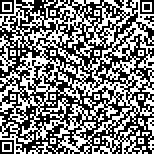| 本文已被:浏览次 下载次 |

码上扫一扫! |
|
|
|
| Parametric optimization on locating microseismic events with reverse time imaging |
|
LI Meng, TAO Guo, WANG Hua, LI Junxiao
|
|
(State Key Laboratory of Petroleum Resources and Prospecting in China University of Petroleum, Beijing 102249, China)
|
| Abstract: |
| Microseismic events can be located using reverse time imaging method, which employs the full waveform data to back propagate to its real origin based on wave equation. However, the estimated locations are strongly dependent on various implementations of the method and the sparsity of sensor geometry, which may result in unreliable location estimations. In this paper, we introduce the peak signal to noise ratio and the semi-axis of the imaged ellipse as new standards to quantitatively evaluate the accuracy and precision of the algorithm. Subsequently, we select one reliable implementation which satisfies the requirement of real data processing based on the pros and cons of various image conditions and waveform input methods. We investigate the impact of density and coverage of receiver array as well as the multiple events on the locations results using synthetic examples and use the results to guide real microseismic data acquisition. The simulated analysis shows that hybrid reverse time imaging trades off between location accuracy and computational efficiency. Multi-scale reverse time imaging condition has better location accuracy and precision, which satisfies the requirement of real-time processing in microseismic field work. In addition, the location accuracy and precision are mainly dependent on the density and coverage of the receiver array, respectively. Finally, successful location of simultaneous multiple microseismic sources requires more rigorous acquisition plans due to the interferences between different events. |
| Key words: microseismic event location with reverse time imaging peak signal to noise ratio image conditions multiple microseismic sources |
|
|